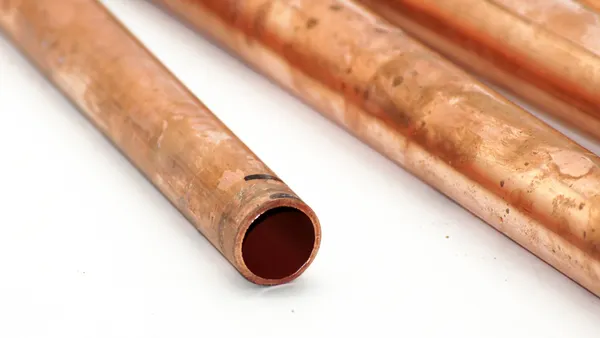Dive Brief:
- The Environmental Protection Agency announced grants July 16 for 38 recipients across the country, totaling nearly $160 million, to support efforts to report and reduce climate pollution from the manufacturing of construction materials and products.
- The money, which comes from the Inflation Reduction Act, will help the construction industry produce greener materials. The EPA estimates that construction materials used in buildings and other built infrastructure account for more than 15% of annual global greenhouse gas emissions, per the release.
- The grants will be awarded to businesses, universities and nonprofit organizations across the country, and will help disclose the environmental impacts associated with manufacturing concrete, asphalt, glass, steel, wood and other materials.
Dive Insight:
The grants, which range from $250,000 to $10 million, will help businesses develop robust, high-quality environmental product declarations which show environmental impacts across the life of a product. These initiatives have the potential to create more sustainable purchasing decisions, EPA said, by letting buyers compare products’ carbon impacts more easily.
Investments in data and tools will make these declarations available for 14 material categories, which include both new and salvaged or reused materials, the agency said.
The awards come amid a push from some cities to reduce buildings’ embodied carbon. Advocacy and industry groups have urged local governments to invest in low-embodied carbon public buildings and support low-embodied carbon building products, and the Biden administration has targeted a 90% reduction in embodied emissions from building materials and construction by 2050 compared with 2005.
The federal government has focused on environmentally conscious upgrades for American infrastructure. The General Services Administration, for example, plans to upgrade 38 federal land ports of entry along the country’s northern and southern borders using $1 billion in IRA and Infrastructure Investment and Jobs Act funds to electrify buildings, pave with low-carbon concrete and otherwise update facilities with greener materials.
“Investing in low-carbon construction materials is an essential part of our work to address climate change,” said Delaware Sen. Tom Carper, chairman of the Senate Environment and Public Works Committee, in the news release.
Some building-oriented recipients include:
- A company in Georgia that will receive funding to report the emissions savings gained by switching from higher-carbon components in cement and concrete to recycled and innovative materials.
- A project in Maine that will help a company that manufactures insulation made from wood fiber track the quantity of energy and raw materials used in each of their processes.
- A project in Illinois that will help a nonprofit organization that sells reused architectural materials measure how much the salvaged materials reduce carbon emissions.
- A major university that will use grant funds to research and document carbon emissions savings from reusing structural steel.
- Several projects that will support workforce development to grow the number of sustainable construction professionals available to support these important efforts.
Environmental issues are a growing issue for the construction industry. Road builders, for example, need to consider how climate change, with extreme weather and rising sea levels, can impact highways.
Contractors are taking on the challenge, such as New York City-based Turner Construction, which committed to making its vehicle fleet electric by 2028 and is piloting low-emission equipment on some of its projects.












